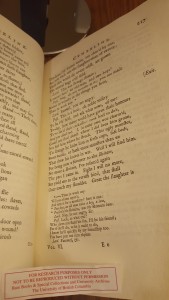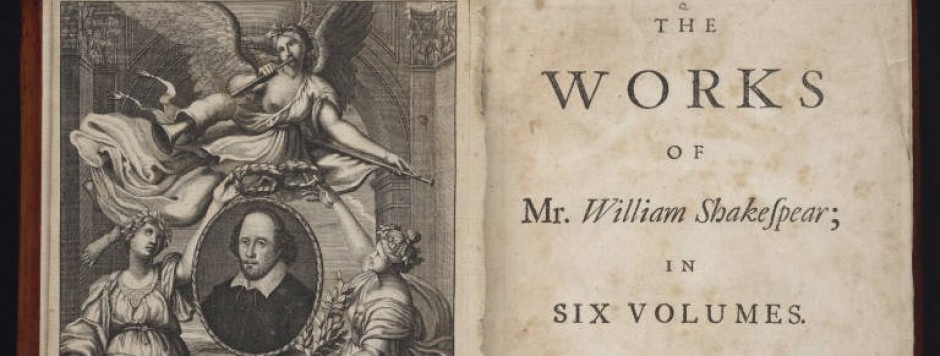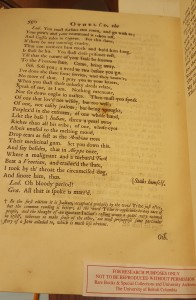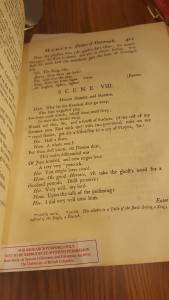
Fig. 1: An asterisk denoting an omitted section from the text. Note that Pope places the “ugly” section at the bottom of the page.
Pope’s footnotes across all six volumes are of considerable interest due to the controversy that they evoke. In his preface, Pope writes that he will denote scenes of particular beauty with stars, while marking scenes he thinks are ugly with three daggers. Some scenes he completely omits from the text and places in the margins, using an asterisk to mark this omission (Fig. 1). He does this omission for lines and scenes that he feels are too ugly to have been written by Shakespeare, thereby using a subjective approach to editing the text. This method has created considerable controversy, sparking debates about the ethics of editors who omit or add to a text and how this meddling can interfere with authorial intent. Although Shakespeare never demonstrated an intention to be published, critics such as Samuel Johnson believed the words of Shakespeare to be sacred and untouchable, so Pope’s method of alteration can be seen as blasphemous and destructive. As G. Thomas Tanselle writes, “an editor’s task is not to ‘improve’ upon an author’s decisions, even when he believes that the author made an unwise revision, and that an editor’s judgments is directed toward the recovery of what the author wrote, not toward an evaluation of the effectiveness of the author’s revisions” (141). Although Tanselle is talking about the modern editor, one can see that his perspective on the role of the editor is informed by the controversy surrounding editors such as Pope. Pope attempted to create the definitive version of Shakespeare by using his own judgment and taste to guide what he should add or omit. By using this method, Pope partially implies that he is “the author” of Shakespeare’s plays, since he changes much of the original material to suit his needs.
Pope also uses footnotes to provide contextual and historical information that the reader may not know (Fig. 2). Similar footnotes can be found in modern books, such as those published by Penguin, that use the method to define archaic words or allusions that may be unfamiliar to modern readers. It is interesting to see this type of footnotes in Pope’s edition because they support the idea that he was attempting to modernize Shakespeare and make the plays more appealing to read. By including footnotes that provide additional information, Pope expresses a desire to make sure that the reader does not miss anything that may be important to the meaning of the text. However, since some of the contextual information communicated through these footnotes are based upon Pope’s own research and interpretation, they also expose Pope’s subjective attempts to guide the reader through the text. This method implies that Pope understands all the nuances and meanings behind every word (Fig. 3). Although Pope’s footnotes greatly increase the appeal of reading Shakespeare to a contemporary reader, they also reveal his own biases regarding the methods that he used to edit and collate Shakespeare’s plays.


